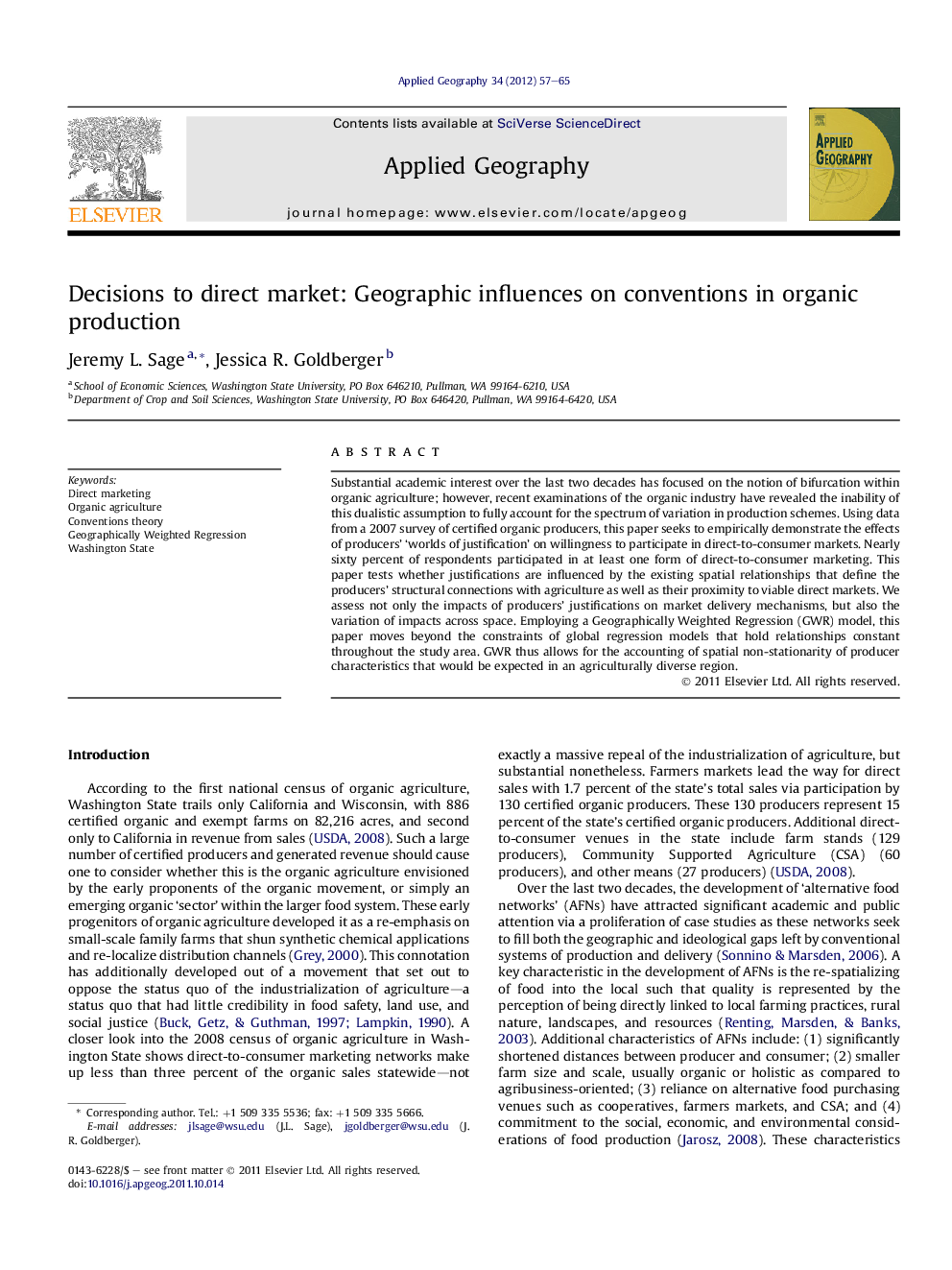| Article ID | Journal | Published Year | Pages | File Type |
|---|---|---|---|---|
| 83411 | Applied Geography | 2012 | 9 Pages |
Substantial academic interest over the last two decades has focused on the notion of bifurcation within organic agriculture; however, recent examinations of the organic industry have revealed the inability of this dualistic assumption to fully account for the spectrum of variation in production schemes. Using data from a 2007 survey of certified organic producers, this paper seeks to empirically demonstrate the effects of producers’ ‘worlds of justification’ on willingness to participate in direct-to-consumer markets. Nearly sixty percent of respondents participated in at least one form of direct-to-consumer marketing. This paper tests whether justifications are influenced by the existing spatial relationships that define the producers’ structural connections with agriculture as well as their proximity to viable direct markets. We assess not only the impacts of producers’ justifications on market delivery mechanisms, but also the variation of impacts across space. Employing a Geographically Weighted Regression (GWR) model, this paper moves beyond the constraints of global regression models that hold relationships constant throughout the study area. GWR thus allows for the accounting of spatial non-stationarity of producer characteristics that would be expected in an agriculturally diverse region.
► Global regression models tend blur the uniqueness of place. ► In localizing a food system, a ‘one-model-fits-all’ approach may be insufficient. ► Realities of place have a mitigating effect on organic producer decisions. ► Agricultural geography plays a pivotal role in the feasibility of direct markets.
